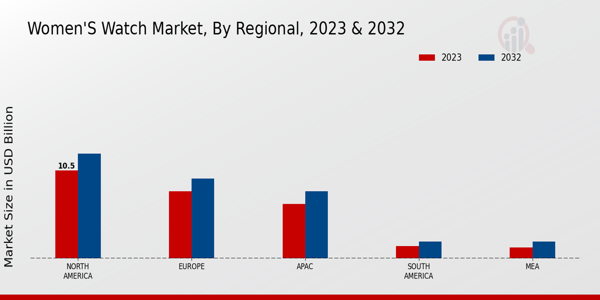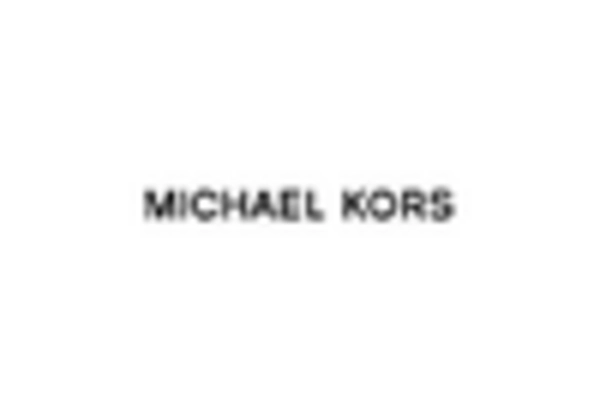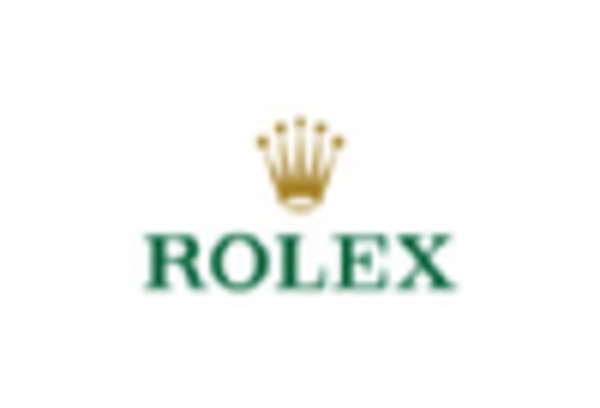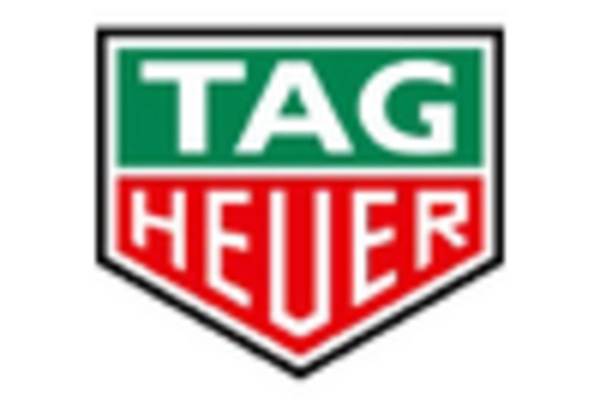Changing Fashion Trends
Changing fashion trends significantly influence the Women's Watch Market. The cyclical nature of fashion often leads to shifts in consumer preferences, with styles evolving to reflect contemporary aesthetics. Recent data indicates that minimalist designs and vintage-inspired pieces are gaining traction among women, as they seek watches that complement their personal style. This trend is further fueled by social media platforms, where influencers showcase various watch styles, creating a ripple effect in consumer behavior. Brands are responding by diversifying their collections to include a range of designs, from bold statement pieces to understated elegance. This adaptability is essential for capturing the attention of fashion-conscious consumers. As the Women's Watch Market continues to evolve, it is imperative for brands to stay attuned to these trends, ensuring that their offerings resonate with the ever-changing tastes of women.
Rising Disposable Income
The increasing disposable income among women is a pivotal driver for the Women's Watch Market. As financial independence becomes more prevalent, women are more inclined to invest in luxury and designer watches. Reports indicate that the luxury watch segment has seen a growth rate of approximately 5% annually, reflecting a shift in consumer spending patterns. This trend suggests that women are prioritizing quality and brand reputation, leading to a surge in demand for high-end timepieces. Furthermore, the rise of dual-income households contributes to this phenomenon, as women have more financial freedom to purchase luxury items. Consequently, brands are adapting their marketing strategies to target this demographic, emphasizing craftsmanship and exclusivity. This evolving landscape indicates a promising future for the Women's Watch Market, as more women seek to express their individuality through premium watch selections.
Technological Advancements
Technological advancements play a crucial role in shaping the Women's Watch Market. The integration of smart technology into traditional watch designs has created a new segment of hybrid watches that appeal to tech-savvy consumers. Data suggests that the smartwatch segment is projected to grow at a compound annual growth rate of 15% over the next five years. This growth is driven by features such as fitness tracking, notifications, and customizable interfaces, which resonate with modern women's lifestyles. Brands are increasingly focusing on creating stylish smartwatches that do not compromise on aesthetics, thereby attracting a broader audience. The convergence of fashion and technology is likely to redefine consumer expectations, pushing traditional watchmakers to innovate. As a result, the Women's Watch Market is witnessing a transformation, where functionality and style coexist, catering to the diverse needs of contemporary women.
Expansion of E-commerce Platforms
The expansion of e-commerce platforms is transforming the Women's Watch Market. With the rise of online shopping, consumers are increasingly turning to digital channels for their watch purchases. Data indicates that e-commerce sales in the watch segment have surged, with a growth rate of approximately 25% over the past year. This shift is attributed to the convenience and accessibility that online shopping offers, allowing consumers to explore a wider range of options from the comfort of their homes. Additionally, brands are leveraging social media and influencer marketing to enhance their online presence, driving traffic to their e-commerce sites. This trend suggests that the Women's Watch Market is adapting to changing consumer behaviors, with a focus on enhancing the online shopping experience. As e-commerce continues to grow, it is likely to play a pivotal role in shaping the future of watch retail.
Increased Focus on Sustainability
An increased focus on sustainability is emerging as a significant driver in the Women's Watch Market. Consumers are becoming more environmentally conscious, prompting brands to adopt sustainable practices in their production processes. This shift is reflected in the growing demand for watches made from eco-friendly materials and ethical sourcing. Reports indicate that brands emphasizing sustainability have experienced a notable increase in sales, with some witnessing growth rates of up to 20% in eco-conscious collections. This trend suggests that women are not only looking for stylish timepieces but also seeking products that align with their values. Consequently, brands are investing in sustainable innovations, such as biodegradable materials and recycled components, to meet this demand. As the Women's Watch Market embraces sustainability, it is likely to attract a new segment of environmentally aware consumers, further driving market growth.


















Leave a Comment